Sealant protects joints and prevents damage
Over the next few weeks, we’re going to take a look at masonry sealants. It’s definitely not a one size fits all type of topic because sealants can be used in masonry construction in a very positive way, but they can also be misused, as well. Some of the cases of misuse include filling mortar recesses in typical brick bed and perpend joints with caulking when repointing is actually really needed.
In cases like that, using caulking improperly can actually cause damage to a building. One of the examples that were looking at though, today, is using a gun applied sealant at a planar joint to allow for flexibility and movement between the planar joints and creating an at least minimal barrier to prevent excessive water entry.
You can see the base of a brick wall in the picture below. Adjacent to the brick wall, there is a concrete sidewalk. This particular concrete sidewalk is aged and deteriorated, to an extent and the aggregate inside of the concrete is exposed at the walking surface. You can also see at the left side of the walkway there’s a portion of asphalt which also meets against the base of the brick wall.
You can see several different details in this picture and they all tell a little bit of the story. The caulking is smeared onto the face of the brick wall as if it was applied by a drunkard. Professionals shouldn’t be randomly smearing caulk on the face of a brick wall in places where it doesn’t even make sense.
If they had made the joint excessively large and covered a portion of the brick face, that actually might make some sense because at least it would have been in an effort to do the right thing, but here there’s separate areas where they just got everything messy and smeared random streaks of sealant directly onto the face of the brick, even where it’s an inch and a half above the intended location at the joint between the base of the wall and the concrete walkway.
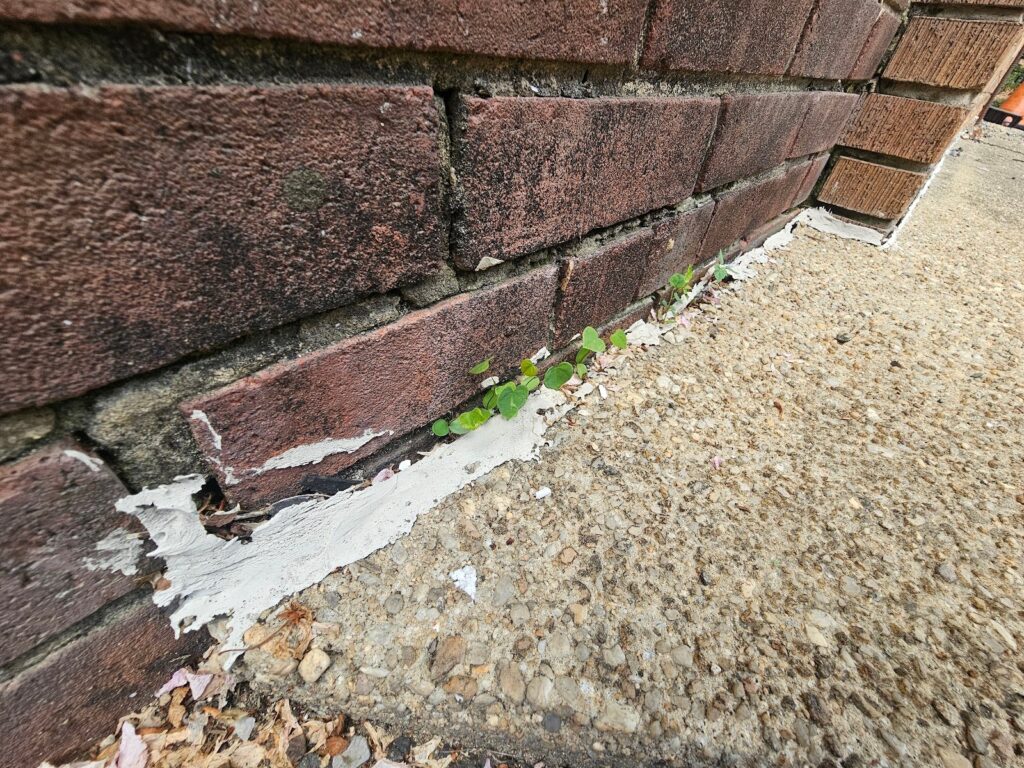
When you look at a little bit wider angle picture of the same area, as shown in the next picture below, you can sort of get an idea why it’s important to seal the joint between the concrete and the brick, at the base of this particular wall. At almost any circumstance, where there’s a brick masonry wall next to a concrete walkway, there will the movement separation. These two different concrete vs masonry elements are both very large.
The wall, for example, happens to be a two-story wall. Even in the case of a single story well, though, it’s a large element that happens to have its own thermal and moisture type environmental pressures that cause micro movements. The adjacent sidewalk as well, is a large and heavy element that also has small micromovements. Two different large construction elements will have some movements that can cause destructive conflict between them. Generally, when installing concrete directly against a brick wall, expansion joints should be used to allow for some intended separation and or movement.
In the picture below though, you may notice that there’s a dark gray color on the base of the wall because the downspout, instead of being directed to an underground piping system or even to a splash block which diverts water away from the building, is instead directed to flow against the face of the wall. That area, at the base of the wall at the bottom of the downspout, is residually and repetitively excessively hydrated by rainwater. The downspout should be corrected, but as well the wall needs to be well maintained.
Without a proper sealant, well managed, and kept in place in the joint between the concrete and the brick, there won’t be anything to fill and or deter water entry into the intended space between the brick and the concrete. Since there is a major water conduit, literally dumping tons of water onto that area repeatedly, it’s especially important that a well-sealed joint is maintained at this location. Otherwise, and excessive amount of moisture will be directed towards the foundation of the wall.
This is particularly problematic, because this is a historic building that didn’t have the benefit of modern foundation waterproofing membrane applied to the foundation and therefore the brick is particularly susceptible. Also, since there is a relatively thin opening for water to enter, this is especially problematic. It’s thin yet large enough for it to be significant to allow water to come in, too small though to allow water to flow back out and or evaporate quickly. All of these elements together are kind of a perfect storm for problems.
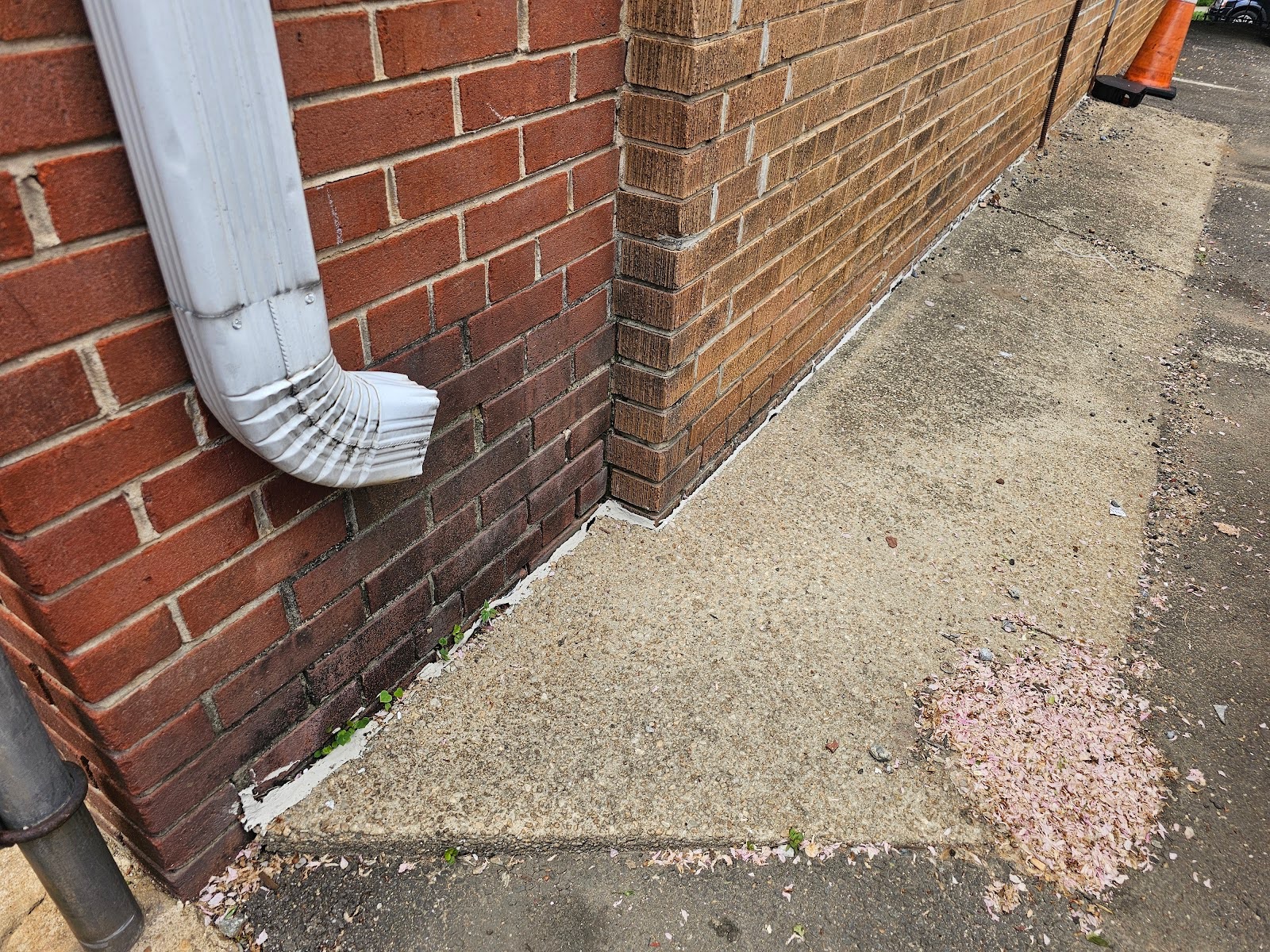
In the next few pictures, you can see a closer view of the joint at the base of the wall. Not only is the caulk worn out and deteriorated, it wasn’t applied properly because it wasn’t set deep enough into the opening. It wasn’t set on top of a backer rod which helps both position the caulking properly, preventing wasteful overfilling, by setting the sealant at an at least minimal level of insertion.
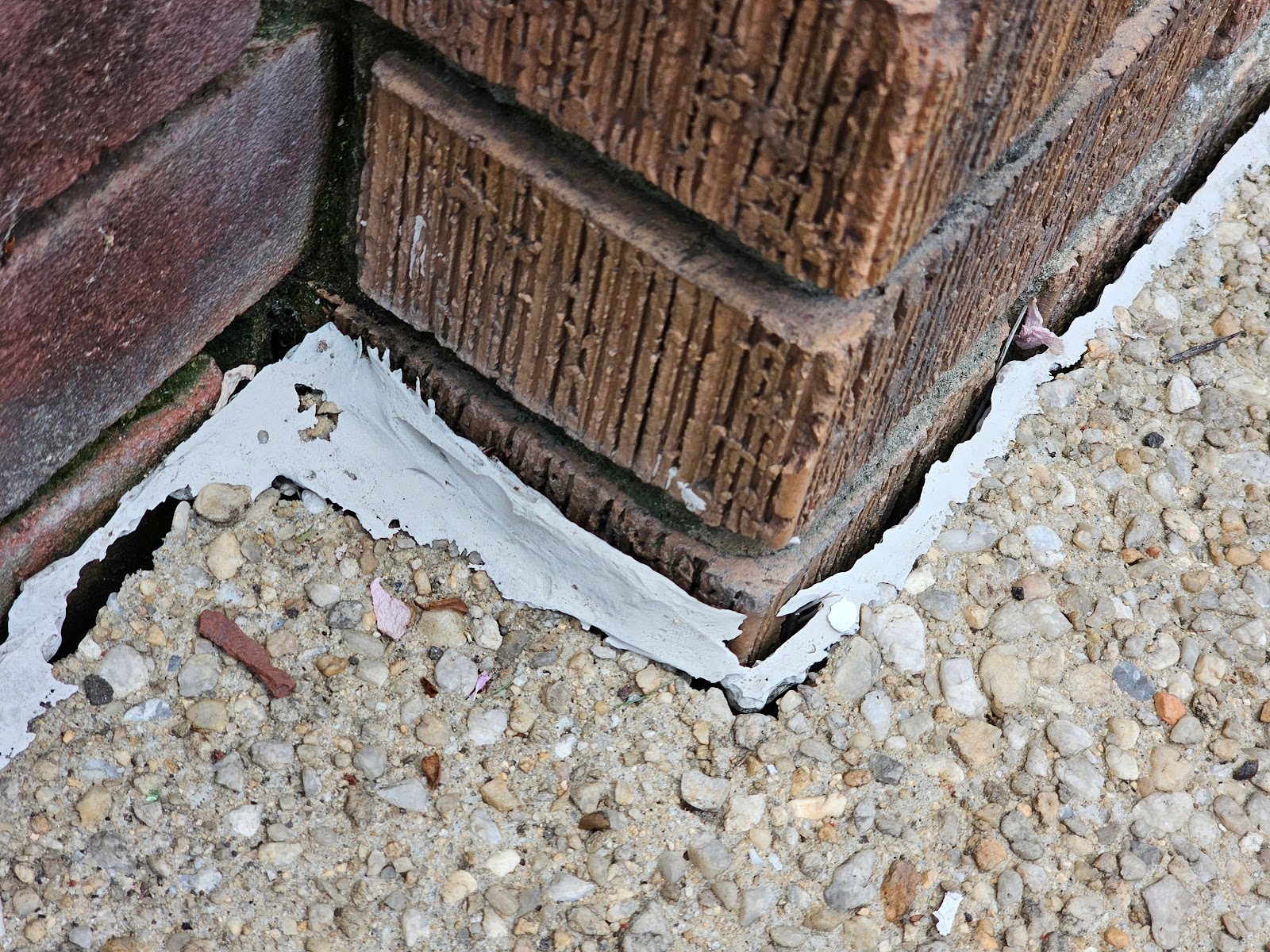
These types of sealants, even the ones which are high performance and high quality products will deteriorate from typical exposure to ultraviolet rays and the typical thermal changes that happen naturally in our region.
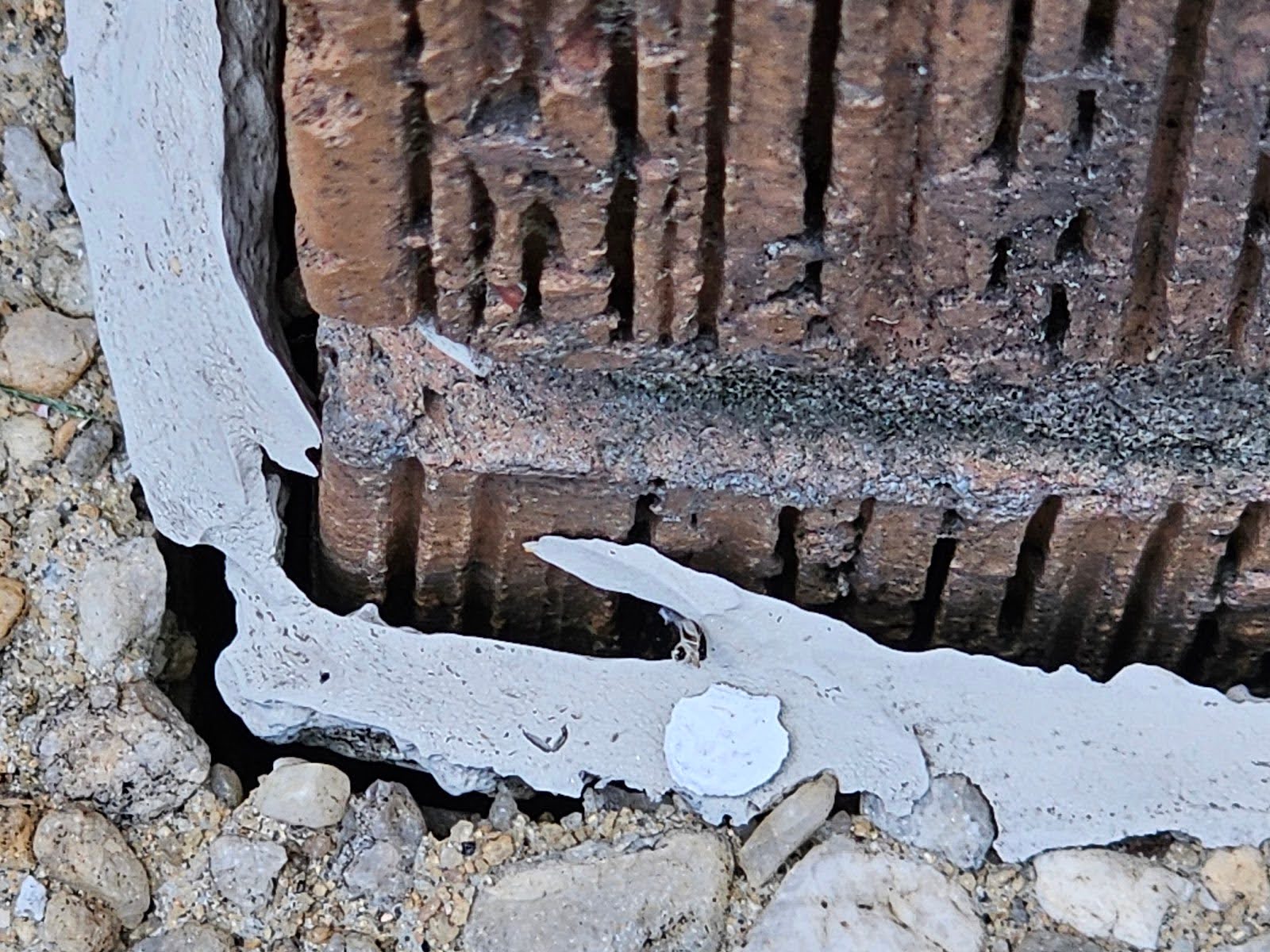
After a sealant application like this has worn out, it’s basically worthless because it doesn’t do anything to stop water from entering into the joint.
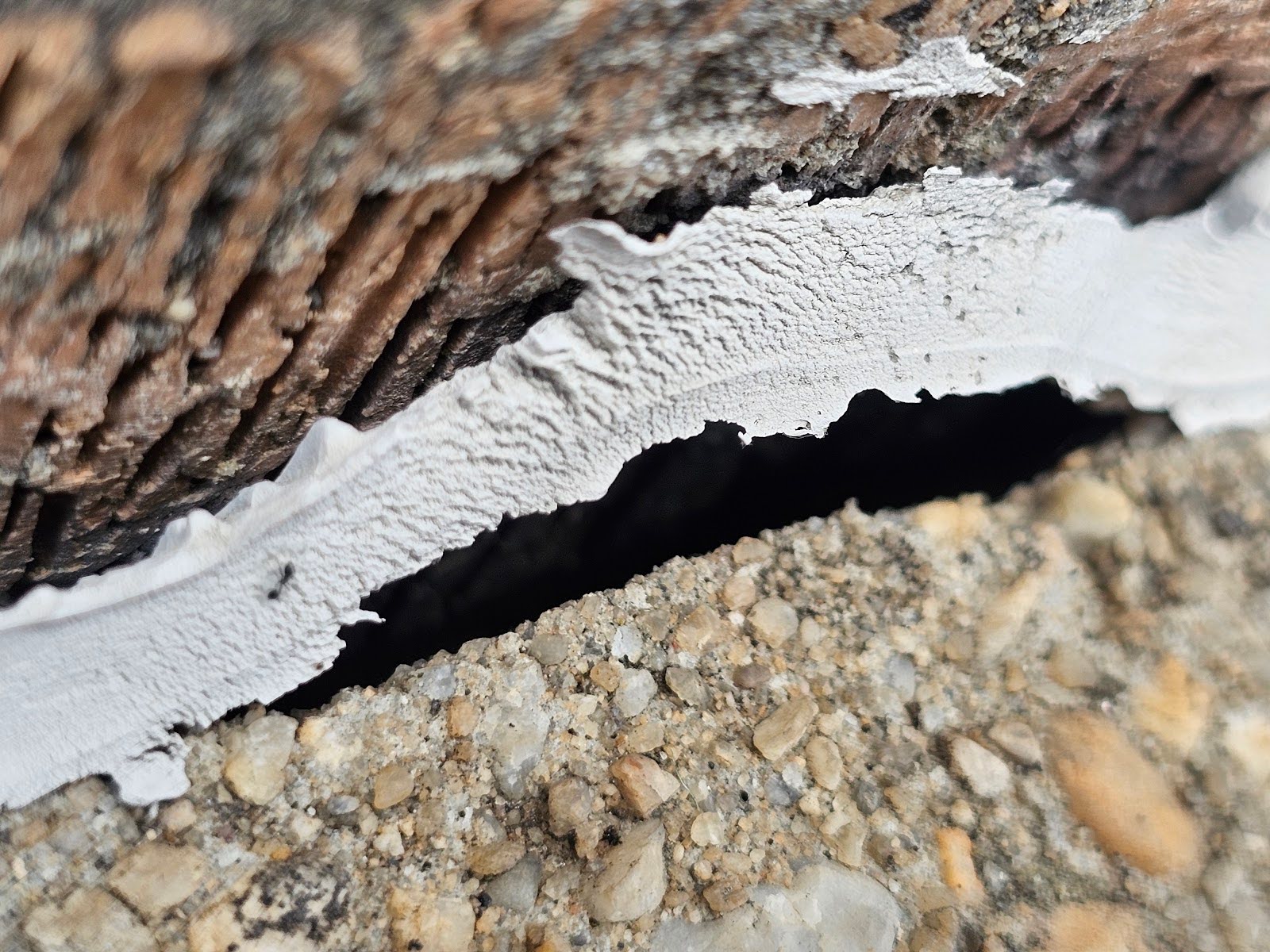
Our company, Dupont Tuckpointing and Masonry, specializes in masonry restoration, historic brick repointing, and tuckpointing services in the Washington D.C. area. These buildings are uniquely historic, and their preservation requires skilled masons who are technically trained in the best practices and knowledge of proper restoration techniques.
We understand the significance of maintaining the architectural integrity of these historic structures, and our team of experienced professionals is dedicated to delivering exceptional craftsmanship. Whether you require masonry restoration, tuckpointing, or brick repointing services, we are here to help.
At Dupont Tuckpointing and Masonry, we take pride in our work and strive to ensure that every project is executed with the utmost care and attention to detail. We are committed to preserving the rich heritage of Washington D.C.’s built environment for generations to come.
If you have any questions or needs regarding masonry restoration, historic brick repointing, or tuckpointing services, please do not hesitate to reach out to us. We would be delighted to assist you and provide you with the expertise and quality workmanship that your historic property deserves.
You can reach us by telephone at (202) 796-7644 and you can reach us by email from the contact form on our website at https://duponttuckpointingmasonrydc.com/contact-us/.




